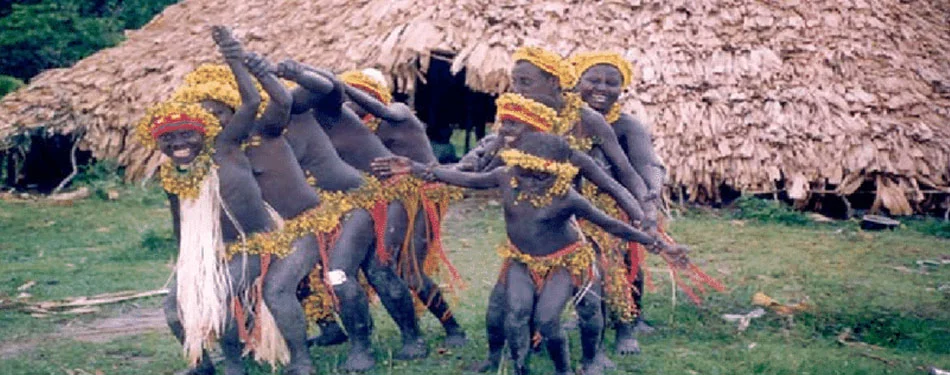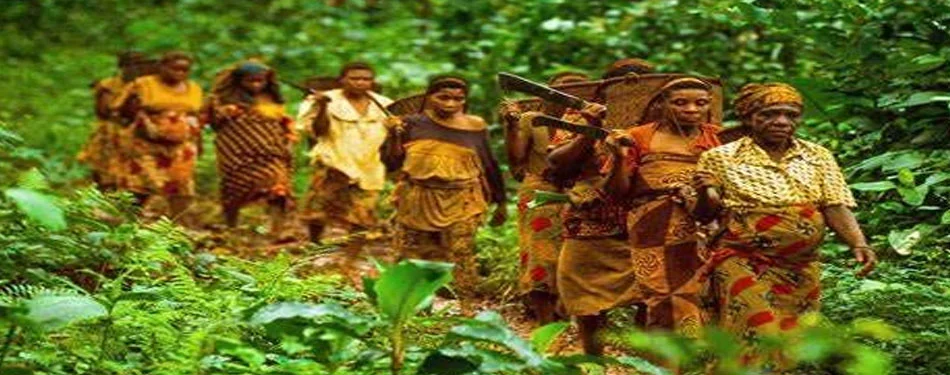Andaman Tribal Heritage: Immersing in the Indigenous Culture

The Andaman Islands, a serene archipelago located in the Bay of Bengal, are not just
known for their picturesque beaches and rich biodiversity but also their deep and
fascinating tribal heritage. This blog provides information about the Andaman tribal
heritage, focusing on the indigenous communities that have lived on these islands for
thousands of years. Learning about Andaman's tribal history and traditions offers a
unique glimpse into the lives of these secluded societies, whose ways of living are a
testament to human resilience and adaptation.
Understanding Andaman's Tribal History and Traditions
The Andaman Islands are home to some of the most isolated tribal groups in the world,
with histories dating back to the early Stone Age. The tribes of the Andaman—such as the
Great Andamanese, the Onge, the Jarawa, and the Sentinelese—have lived in harmony with
the dense forests and the surrounding seas for centuries. Their traditions, languages,
and rituals offer fascinating insights into a way of life that has remained largely
unchanged over thousands of years.
Historically, these tribes have been hunters and gatherers, relying on the forest for
food, shelter, and tools. Their deep knowledge of the environment and their sustainable
practices are critical lessons in the conservation of nature. By learning about
Andaman's tribal history and traditions, we gain a unique perspective on sustainability
and ecological balance.
Experiencing Tribal Community Interactions in Andaman
Interacting with the tribal communities of Andaman, where permissible, is a deep way to
engage with and learn about these ancient cultures. However, it's important to approach
such interactions with respect and sensitivity, as these tribes have faced threats from
the outside world, including diseases and loss of territory.
Government policies and various non-governmental organizations have established
guidelines to ensure that any interaction with the tribes is conducted in a manner that
protects their welfare and dignity. For tourists and researchers alike, understanding
these guidelines is crucial before planning any visits to the indigenous areas.
The Appeal of Andaman Indigenous Village Visits

Visiting the indigenous villages of Andaman is a rare opportunity to see the tribal
lifestyle up close. Although direct contact with particularly isolated tribes like the
Sentinelese is prohibited to protect their health and sovereignty, authorized visits to
certain other tribal areas can be arranged under strict supervision. These visits allow
tourists to observe the unique architecture of the tribal huts, their artisanal skills,
and their daily activities, providing a real-world context to the rich cultural tapestry
of Andaman tribal heritage.
During these visits, it is possible to see how the tribal people skillfully use natural
resources to craft tools, weave clothes, and prepare food, all of which are important to
their self-sufficient lifestyle. This not only respects the tribe's privacy but also
helps in preserving their culture and environment.
Click here to read more
Learning from the Andaman Tribal Lifestyle

The lifestyle of the Andaman tribes offers invaluable lessons on living sustainably with
nature. Their minimalistic living standards and their practices of using only what they
need from the environment can inspire modern societies facing issues like waste
management and overconsumption.
Moreover, the tribal methods of fishing, hunting, and gathering are aligned with their
deep-seated beliefs in the blessing of nature. They have a spiritual connection with the
land and sea, which is reflected in their rituals and daily practices. Observing and
understanding the Andaman tribal lifestyle helps in appreciating the balance between
human needs and environmental conservation.
The Importance of Preserving Andaman Tribal Heritage
Preserving Andaman's tribal heritage is important not only for the sake of cultural
diversity but also for the ecological insights it offers. The tribal communities are
living examples of how human societies can thrive without adversely affecting their
ecosystems. Efforts to document and protect their knowledge and traditions are vital in
the global fight against climate change and biodiversity loss.
Educational programs that focus on Andaman's tribal history and traditions, as well as
controlled and respectful tourism, can play a major role in this preservation effort. By
promoting awareness and understanding, we can ensure that the heritage of these
remarkable communities is not lost to time.
Challenges and Efforts in Protecting Tribal Rights and Culture

The tribes of Andaman face numerous challenges today, ranging from encroachment on their
land to the erosion of their cultural practices. Illegal logging, poaching, and the
spread of diseases from outsiders pose serious threats to their existence. Moreover, the
increasing interest in their land for tourism and commercial activities threatens their
way of life. Addressing these challenges requires concerted efforts from the government,
local communities, and international bodies to ensure that the rights and lands of these
tribes are protected.
Efforts to safeguard the tribal populations include strict regulations on interactions
and visits, as well as ongoing health and welfare initiatives aimed at providing support
without disrupting their lifestyle. Educational campaigns aimed at both locals and
tourists help build a respectful awareness of the tribal communities’ rights and
traditions. Legal protections are also in place to prevent exploitation and to manage
the environmental impact of nearby settlements and activities.
The Role of Education in Preserving Andaman’s Tribal Heritage
Education plays an important role in preserving the tribal heritage of the Andaman
Islands. Initiatives to document the languages, folklore, and rituals of the tribes help
in keeping their cultural heritage alive. Also, incorporating knowledge about the tribes
into local school curricula raises awareness among the younger generation about the
importance of these indigenous cultures.
Collaborations between tribal elders and academic institutions can help in creating
detailed ethnographic records that contribute to a better understanding of these
cultures. These educational efforts not only benefit the tribal communities by
preserving their heritage but also enrich the global community's understanding of
diverse ways of life.
Sustainable Tourism: A Path to Supporting Andaman’s Tribal Communities
Sustainable tourism, if done responsibly, offers a pathway to support the economic
stability of the Andaman tribes without harming their cultural integrity. Programs that
involve the tribes in tourism, allowing them to manage and control the extent and nature
of tourist interactions, can provide them with a sustainable income source. Such
initiatives need to be designed carefully to ensure they align with the tribes' desires
and are controlled by them.
Tourists can contribute to the preservation of Andaman tribal heritage by choosing
activities and tours that are ethical and respectful. Opting for guides and tours that
have been approved by local authorities and that prioritize the welfare of the tribal
communities can make a significant difference. Moreover, tourists should adhere to
guidelines that prohibit the taking of photos or videos that could exploit or disrespect
the tribal members.
Future Prospects: Balancing Modernity and Tradition
The future of Andaman's tribal communities hangs in a delicate balance between preserving
their traditional ways of life and integrating aspects of modernity that can benefit
them without undermining their cultural essence. Efforts to provide educational and
health facilities, while respecting their desire to remain isolated, are ongoing. The
challenge lies in implementing these modern benefits in a way that does not dilute or
destroy their traditional practices and social structures.
As the world becomes increasingly interconnected, the importance of preserving unique
cultures like those of Andaman’s tribes becomes even more important. These communities
not only represent an irreplaceable facet of human diversity but also embody lessons of
sustainability and resilience that the wider world can learn from.
Conclusion
By learning about Andaman's tribal history and traditions and experiencing tribal
community interactions in Andaman, we not only learn about human history but also learn
valuable lessons on coexistence and sustainability. As we continue to explore and
interact with these indigenous cultures, we must do so with the utmost respect and
responsibility, ensuring that Andaman's tribal heritage is cherished and preserved for
generations to come.



